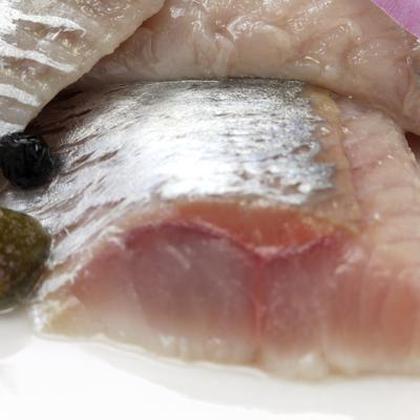Showing results for 'Herring'
close
Herring

Herring are a very important forage fish, found in large schools around fishing banks and near coastlines. It has traditionally been one of the most important fisheries in the world.
Herring Pairs With:
Food Item
Flavor Affinity Level
Herring Properties:
| Food Property | Type | Description |
|---|---|---|
| Flavor Profile | Umami | Herring has a savory, rich, and meaty flavor profile that is characteristic of umami taste. |
| Texture | Firmness | Herring has a firm texture, making it suitable for grilling or pan-searing without falling apart. |
| Moisture | Herring is a moist fish, which helps in keeping it juicy and tender when cooked. | |
| Nutritional Value | Macronutrients | Herring is rich in high-quality protein and healthy fats, making it a nutritious food choice. |
| Micronutrients | Herring is a good source of essential vitamins and minerals such as vitamin D, vitamin B12, selenium, and omega-3 fatty acids. | |
| Color | Natural Pigments | Herring has a natural pinkish flesh color due to the presence of carotenoid pigments in its diet. |
| Aroma | Volatile Compounds | Herring has a distinctive fishy aroma that is characteristic of fresh seafood. |
| Chemical Composition | Acidity/Alkalinity (pH) | Herring has a slightly alkaline pH, which helps in preserving its freshness and quality. |
| Cooking Behavior | Heat Conductivity | Herring cooks quickly due to its high heat conductivity, making it suitable for grilling, baking, or frying. |
| Water Retention | Herring retains moisture well during cooking, resulting in a tender and succulent texture. | |
| Oil Absorption | Herring absorbs oil moderately when cooked, adding flavor and richness to the dish. |
Food Pairing App - Version 1.2.0
